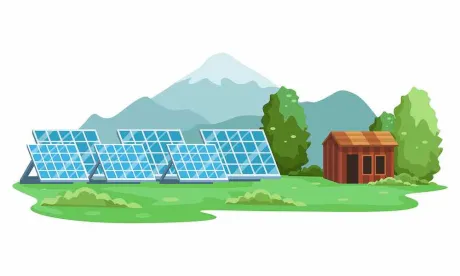On March 24, the Federal Energy Regulatory Commission (FERC) made an unexpected and bipartisan about-face on its freshly updated policies for considering the environmental impacts of natural gas infrastructure projects like pipelines and liquified natural gas (LNG) export facilities.1 Just a month after issuing the new policies—which were issued on partisan lines, and which warned that natural gas infrastructure projects may be scuttled based on their downstream greenhouse gas emissions—FERC placed the policies on hold, labeling them as “drafts” and welcoming stakeholder comments.2 FERC also broke a logjam to issue new natural gas infrastructure project approvals on a bipartisan basis.
FERC’s abrupt shift may have taken some environmental advocates by surprise,3 but context is king: Though FERC is an independent agency, it is not immune to political pressure and is not blind to geopolitics, including war raging in Ukraine and resulting global energy pressures. Just a day after FERC’s policy reversal, the White House announced a joint initiative with the European Union (the US-EU Alliance) where the US will aim to supply the EU an incremental 15 billion cubic meters of LNG by the end of 2022, and more than triple that amount by 2030.
The speed of these developments suggests a shift in the energy policy zeitgeist from a partisan climate fight to a bipartisan focus on responsible energy security and independence for the US and our allies. Energy sector investors would do well to stay mindful of this potential reordering of priorities to better anticipate headwinds and tailwinds for existing and future investments. We offer three broad observations:
First, renewed focus on US leadership as an LNG supplier may spur an uptick in natural gas infrastructure development, which likely will have follow-on effects for carbon capture, hydrogen, and renewable natural gas (RNG). To meet the US-EU Alliance commitment, additional LNG and natural gas pipelines will be needed in short order.4 Renewed focus on natural gas investments could, in turn, have positive follow-on effects for certain next-generation clean energy investments—like carbon capture and sequestration and hydrogen projects—as project sponsors eye opportunities to retrofit and optimize natural gas infrastructure. Relatedly, US RNG is likely to continue to receive focus and support through programs like the US Environmental Protection Agency’s Renewable Fuel Standard program, as expanded reliance on clean fuels is consistent with the policy goal of promoting responsible energy security at home and abroad (recognizing that the volume of US RNG is not significant enough to meet Europe’s requirements). All that said, in assessing the US-EU Alliance as a potential driver of opportunities, investors in US infrastructure should remain mindful of nearer-term limitations and risks. On the export front, US LNG projects entail navigating a years-long permitting process and multi-year construction timelines: a quick practical reality check will reveal that there will be limited US LNG capacity additions before 2025 and no quick fix. On the import side, limitations include current import capacity constraints in Europe and potential geopolitical uncertainties associated with some LNG supply arrangements.5
Second, renewed focus on US independence and protectionism may create new complexity for renewable energy, battery storage, or electric vehicle investments. Investments in wind, solar and battery storage resources as well as the electrification of the transportation sector naturally align with a focus on responsible energy independence because they decrease dependence on fossil fuels while also providing environmental benefits. However, policy trends toward US protectionism and US independence from foreign commodities and equipment, like panels for solar and nickel and lithium for storage or electric vehicles, could create new challenges (and opportunities) worth watching. Examples of these trends include:
-
Solar. The solar sector is facing a new potential supply-chain setback now that the Department of Commerce is moving forward with a solar antidumping investigation.6 The measure exacerbates existing supply-chain challenges for the solar industry, including recent tariff extensions (albeit with some carve-outs). Notably, both the Biden and Trump administrations maintained the tariff extensions, suggesting bipartisan support and thus potential longevity for these policies.
-
Offshore Wind. As part of its auction process for the award of offshore leases, the Bureau of Ocean Energy Management is creating incentives for bidders to commit to domestic supply-chain investments as well as workforce and training. And for its part, last week the US House of Representatives passed the Coast Guard Authorization Act of 2022 on a bipartisan basis. The bill prioritizes domestic workers over foreign mariners working on offshore wind turbine installation vessels, and stoked fears among clean energy advocates that, if the bill ever becomes law, it could stymie offshore development.
-
Storage and Electric Vehicle Batteries. President Biden has announced plans to invoke the Defense Production Act to boost domestic extraction of rare earth minerals needed for the production of battery materials to power electric vehicles, which is intended to help fuel the growth of the US minerals mining sector.
The protectionist trend may deepen if parts of the Build Back Better (BBB) proposed legislation —which was debated for most of 2021 before coming to a screeching halt in December— resurface as expected.7 The BBB included incentives for domestic manufacturing to accompany virtually all of its proposed renewable energy tax credits and reimbursements, and such incentives could now have bipartisan tailwinds.
In this policy environment, investors in the renewable, battery storage, and electric vehicle space would do well to scrutinize supply chain costs and labor availability in the course of their deal diligence and seek-out opportunities to leverage any new federal policies that support domestic mining and manufacturing.
Looking ahead, calls for responsible energy security and the rise of cyber threats from abroad could give policymakers new reason to coalesce around power grid investments. Any path to clean energy security in the US runs through the power grid, which will require not only significant investment in new infrastructure to connect clean generation sources to load centers, but also the modernization of older infrastructure—all in the face of new cyber and other grid threats. To date, the Biden administration’s efforts to promote transmission investments have lacked ambition. The Infrastructure Investment and Jobs Act features measures to support advancements and investment in both cybersecurity and transmission, but with only relatively modest project funding and many new implementation questions.8 And for its part, last year FERC launched a proceeding to reform interstate transmission planning rules, but any resulting new rules may not be fully implemented for years to come.9 These measures fall well short of the transformative action needed to modernize the grid and get long-haul transmission lines built. Time will tell, but the current bipartisan focus on energy security and independence—punctuated by headlines warning of new power-grid threats—may create new urgency around promoting grid investments, with particular emphasis on cybersecurity and grid reliability and resilience (key bipartisan priorities).
* * *
The energy policy conversation in the US is changing, accelerated by the harrowing war unfolding in Ukraine. Investors today may not be facing a wholly new challenge, per se, but a greater one: generating returns in a policy environment that places new weight on energy independence and security while also maintaining a focus on climate concerns.
FOOTNOTES
1. Certification of New Interstate Natural Gas Facilities, 178 FERC ¶ 61,107 (2022); Consideration of Greenhouse Gas Emissions in Natural Gas Infrastructure Project Reviews, 178 FERC ¶ 61,108 (2022).
2. Order on Draft Policy Statements, 178 FERC ¶ 61,197 (2022).
3. FERC pursued the new policies against the backdrop of a series of DC Circuit court decisions faulting FERC’s environmental review and consideration of greenhouse gas emissions. E.g., Food & Water Watch v. FERC, No. 20-1132, 2022 WL 727037 (D.C. Cir. Mar. 11, 2022).
4. The development of needed infrastructure could be further buoyed if FERC course-corrects and provides more regulatory certainty.
5. For example, immediately after the announcement of the US-EU Alliance, China’s ENN Natural Gas locked a 20-year LNG purchase agreement for an aggregate of 2.7 million tons of LNG per annum from Energy Transfer’s Lake Charles LNG project. Whether this means China is supporting efforts to divert US natural gas from Europe—and, if so, whether the US would respond—are open questions.
6. A petition filed by California-based solar module manufacturer Auxin Solar requesting a review of solar panel imports from Chinese companies working in Cambodia, Malaysia, Thailand and Vietnam prompted the investigation.
7. The Biden administration budget proposal submitted to Congress last week includes a deficit-neutral reserve fund to account for a potential future agreement with Congress on certain provisions of the BBB.
8. The Department of Energy has issued a notice setting forth its planned implementation of, among other programs, a $2.5 billion fund to facilitate the construction or upgrade of transmission lines; a $3 billion smart grid grant program; and a $5 billion grid reliability and resilience innovation program.
9. FERC has to date merely issued an advanced notice of proposed rulemaking. Any notice of proposed rulemaking that follows will be subject to comment, with any resulting final rule subject to an implementation timeline.



 />i
/>i

